The
short shovel used by the German Army was called Kleines Schanzzeug,
which can be
translated as small entrenching tool. Its design was basically unchanged
since the 1880’s.
The
blade measured aprox.14,5 cm wide by 18,5 cm length. The complete length
of the shovel was
aprox. 55 cm.
Below 2 early shovels with leather carriers
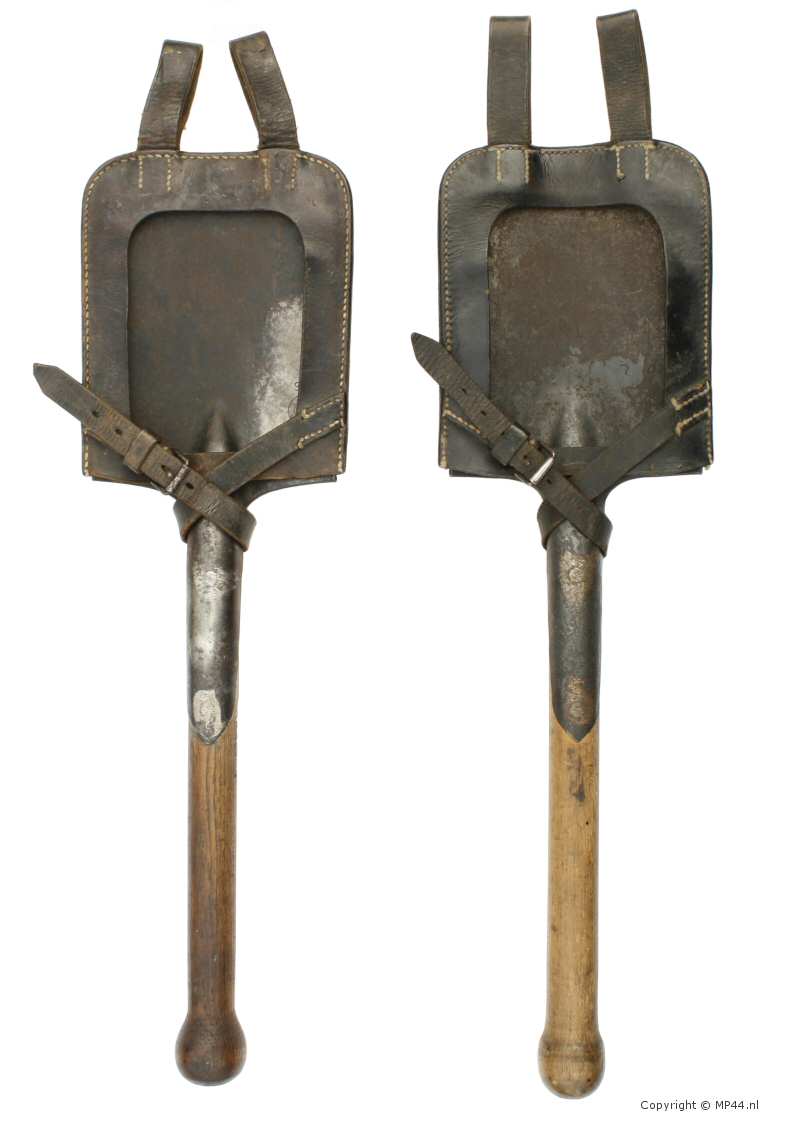
The carrier
for the E-tool was made of leather, formed like the blade, with a rim on
the front.
The back piece and front piece were sewed together with an opening at the
bottom so that the blade
slides between the 2 pieces of leather.
In between was a small strip of leather so that the shovel blade had a
better fit (see sketch below)
The
E-tool is then secured by a leather strap (aprox. 38 cm) which is wrapped
around the handle.
Also the
leather strap was used to secure the bayonet, or sometimes even a steel
handgrenade
model 24 can be seen in pictures.
The belt loops are also sewn between the back piece and the rim.

** Small sketch which shows the parts of the
carrier (without belt loops)
The front side of the cover
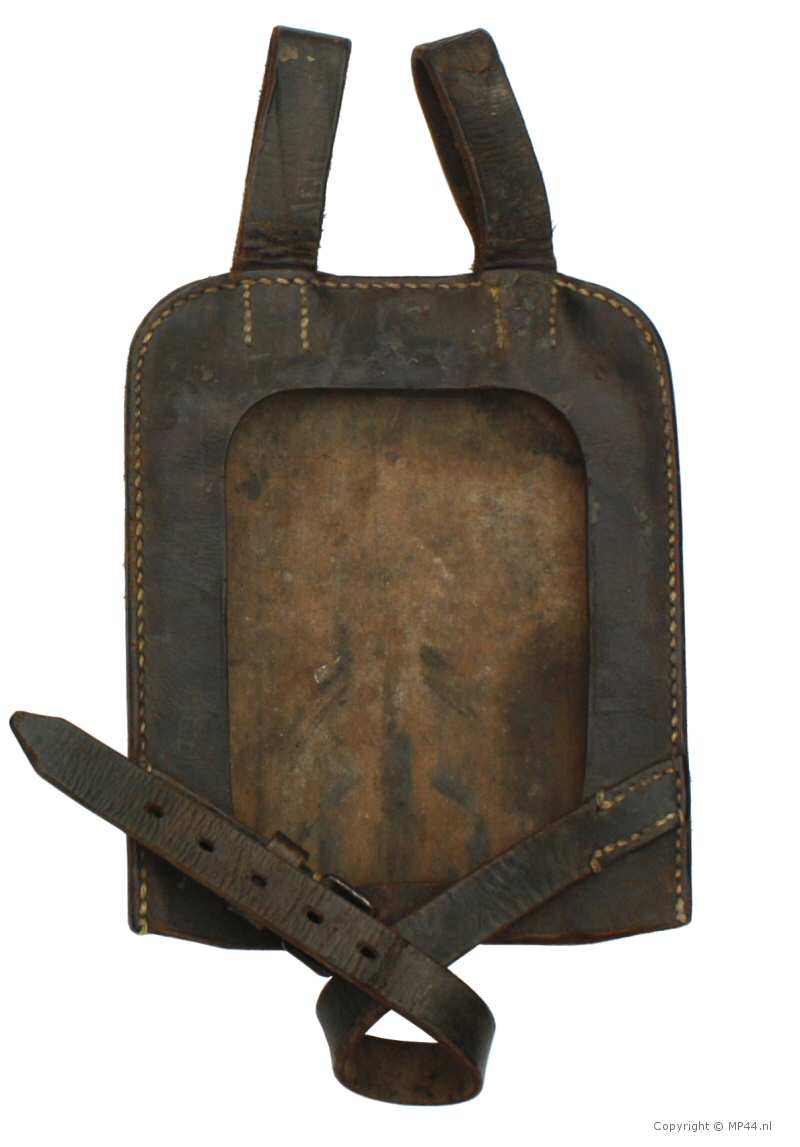
And the back side

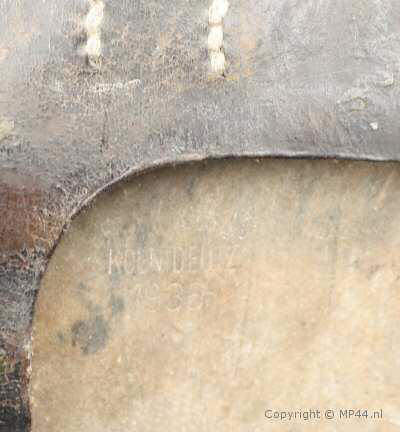

On the left the upper left side of the cover where the maker mark
can be found.It is somewhat difficult to see on the photo's
FR&K VOEGELS
KOLN-DEUTZ
1936Reichswehr Eagle with
WaA 234
The producer was :
Franz & Karl Voegels, Lederwarenfabrik,
Köln, Wollküche 20/24 (NW)Later the factory was known under the code ewx
Until 1938 the carriers were
entirely made of leather, but after 1938 the
carriers
were made of artificial leather.
These models are made of black or
(late war) tan pressed cardboard also called Press-stoff
or
Ersatz Leder (replacement leather).
The belt loops and securing straps however are allways from real leather.
The trials were announced in the H.V.Bl. (Heeres Verordnungs Blatt)
Heeres Verordnungs Blatt 82 vom 26.1.38 (H.V.Bl. 82 from january 26, 1938)
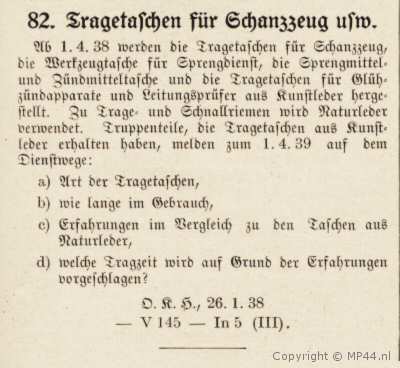
82. Carriers for Entrenching Tool etc.
As of April 1st 1938, the carriers for entrenching tools, the tool pouches for the pioneer explosive services, the carriers for exposive devices, for ignitors, and carriers for line testers are made out of artificial leather.
The carrying and closing straps will be made of natural leather.
The troops that have received carriers from artificial leather will report the following until april 1st 1939 :a) Sort of carrier,
b) How long in use,
c) Experience in comparison to natural leather carriers,
d) what carrying time is proposed based on experience ?
January 26, 1938
Appearantly the trials were not concluded in 1939
because the H.V.Bl. 513 from may 12th, 1939
says the following:
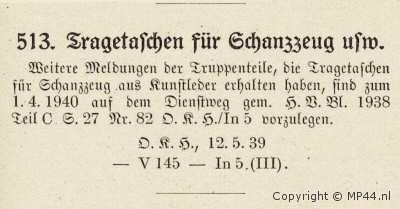
513. Carriers for Entrenching Tool etc.
Further reports of troops, who received carriers for entrenching
tools from artificial leather, may be submitted until april 1st, 1940 through
the official channels conform H.V.Bl. 1938, part C, page 27, Nr. 82.
May 12, 1939
In march 1940 the required reports are cancelled until further notice.
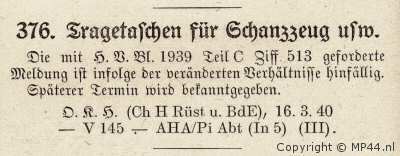
376. Carriers for Entrenching Tool etc.
The required reports conform H.V.Bl. 1939, part C, Nr. 513 are
obsolete due to the changed circumstances.
A later date will be given.March 16, 1940
Unfortunately no further information can be found
regarding the use of artificial leather
but due to the fact that late war dated carriers most of the time are made of
artificial leather it is safe to say
that the use of this so called Ersatzleder was implemented.
Another remarkable fact is that I have not seen a artificial cover dated before 1942.
It is possible that the H.V.Bl. are
referring to the covers of the Klappspaten (folding shovels), but
these are mentioned
in other parts of the H.M. and H.V.Bl. and specifically called
Klappspaten in stead of Schanzzeug.
Below, examples of entrenching tools with artificial leather carriers are shown
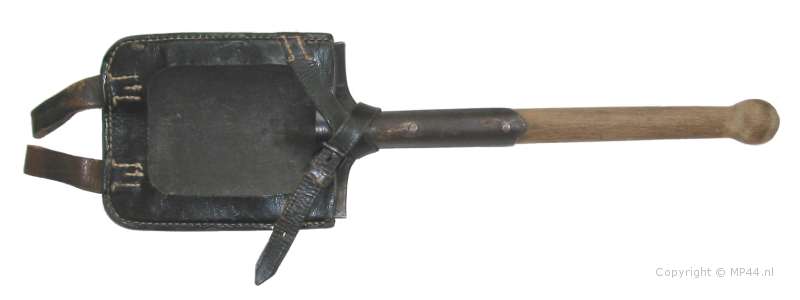
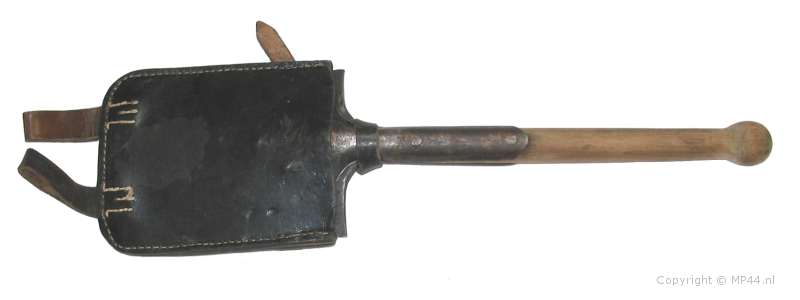
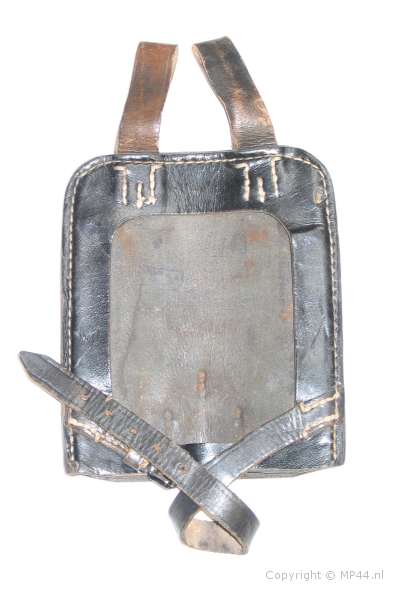
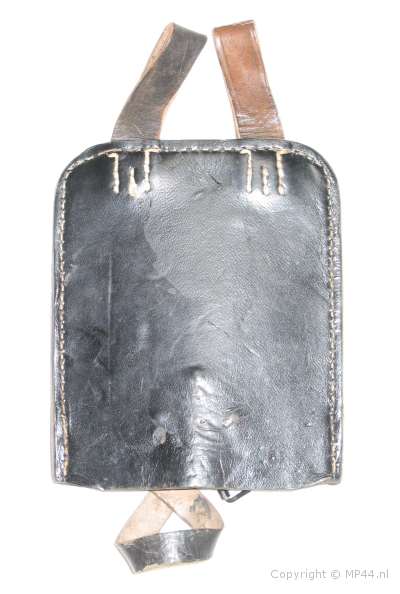
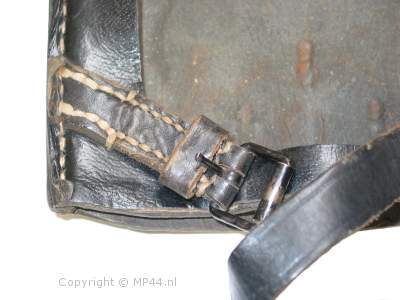
On the left a detail shot of the buckle
The one shown here is a 1943 Press-stoff type with manufacturers stamp and WaA stamp.
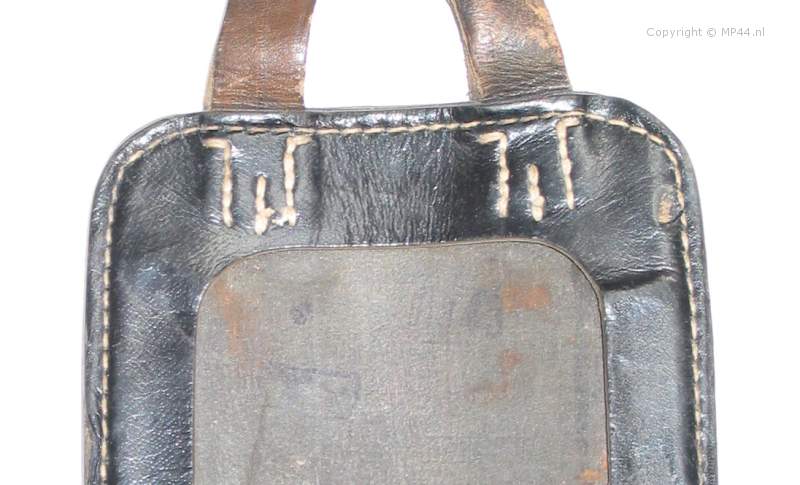

An atttempt to make the maker mark more visible.
It looks a lot like dle 43
If examined from another angle could also be dla 43
Below , the side view of the
Entrenching tool is shown.
clearly visible is that the handle is pointing outward, as to prevent the
wooden handle
from hindering the Soldier who is wearing the Entrenching tool.
On period pictures however, one can see soldiers wearing the shovel pointing outwards, but also inwards.
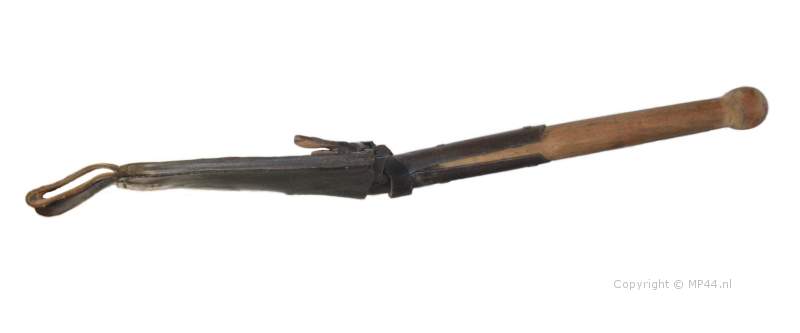
On this picture from the Bundesarchiv you can see the shovel pointing outwards
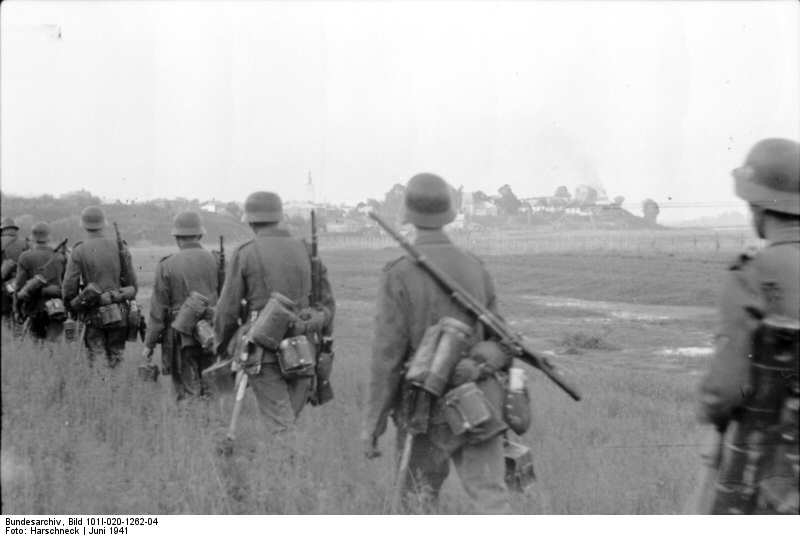
While on this picture, it is clear that the shovel is pointing inwards
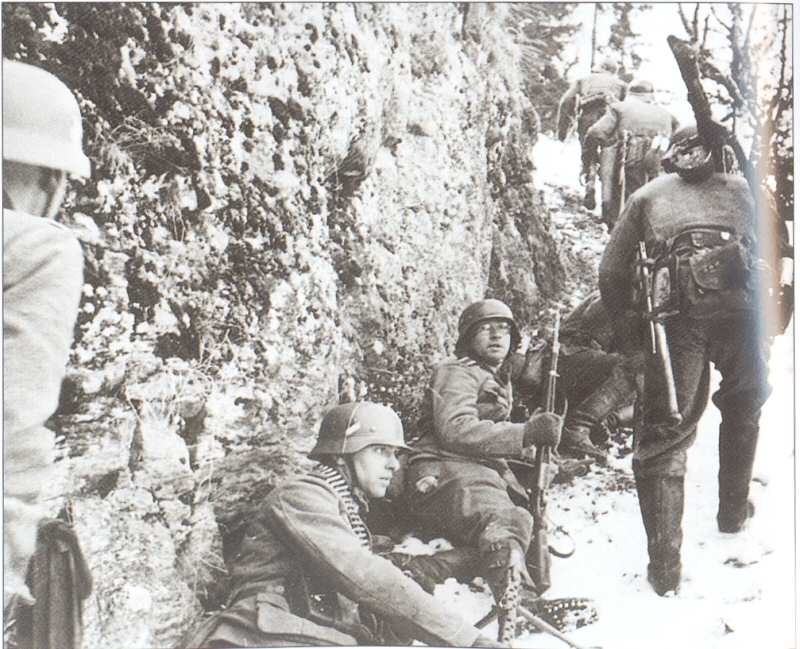
Below an example of the hard to find tan Press-stoff carrier.
The real leather (brown) belts are clearly visible.
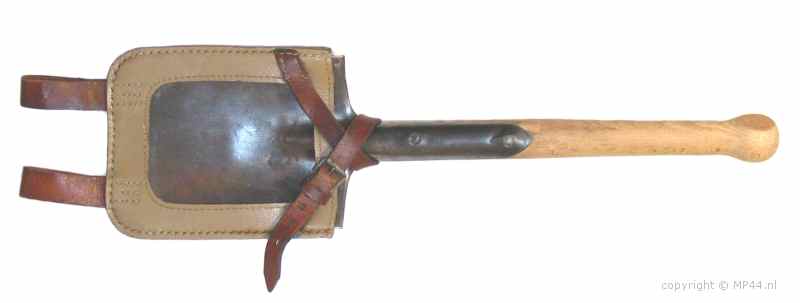
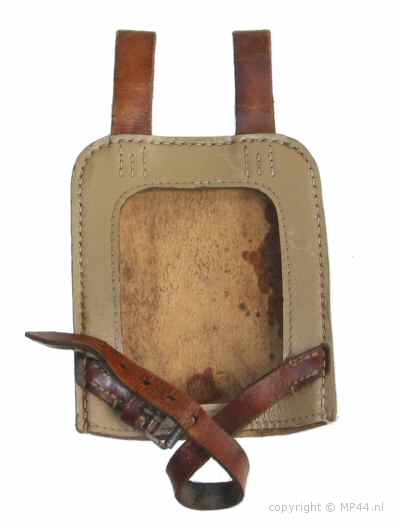
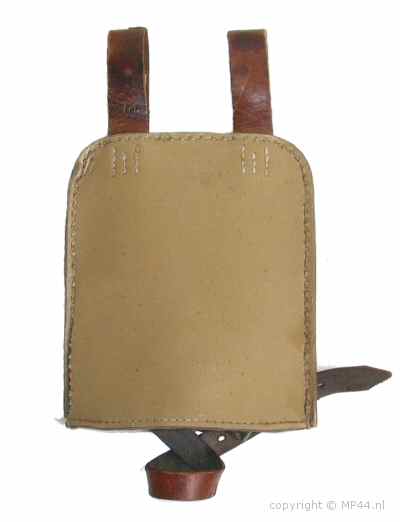
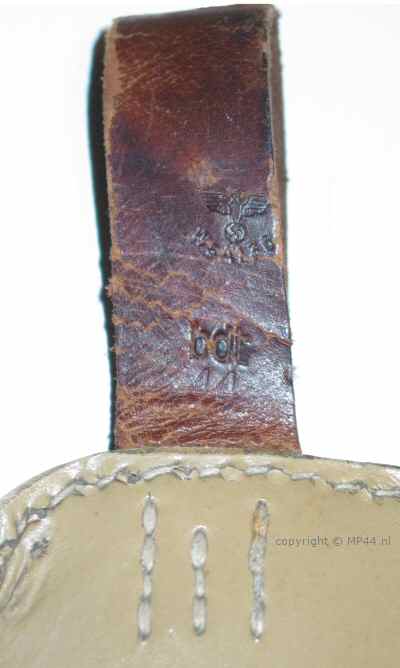
On the left the manufacturer stamp
bdt, year 44
and WaA 136
The maker mark stands for :
"Salewa", Lederwarenfabrik
G.m.b.H.,
München, Thalkirchnerstraße 47.
The shovel
Below an example of a 1943 dated shovel
The blade was riveted to the unpainted wooden handle.
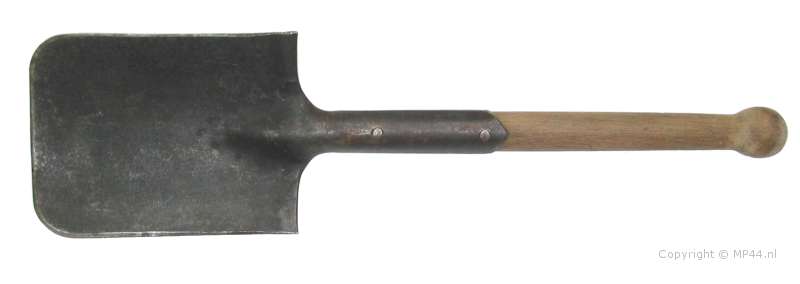
On the back side , the other half was spot-welded to the blade
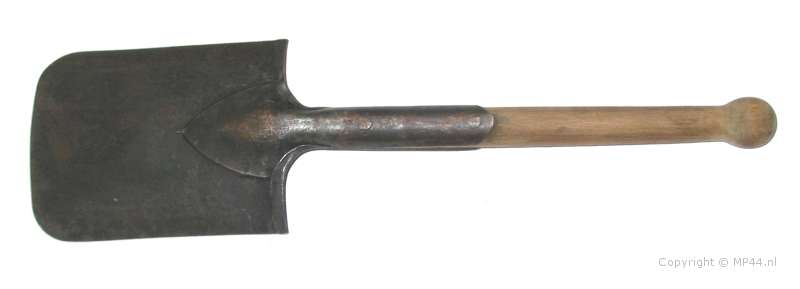
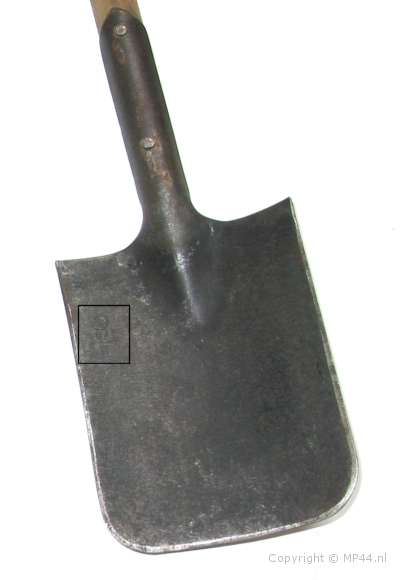
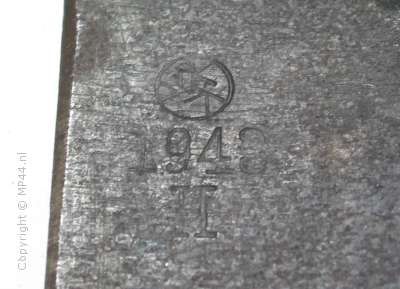
The blade is stamped with the
manufacurer code :
triple K in a circle,
the date 1943,
and an H (for Heer)

Thanks to a reader (thank you Klaus !) who found this on the net, which identifies the maker as :
Carl Krampe Ww., Rummenohl, Westf.

Another section will concentrate on the Folding entrenching tool.